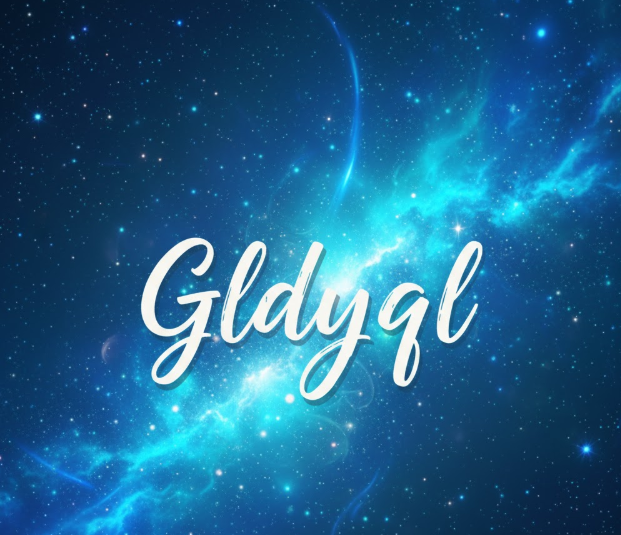Inomyalgia: Understanding and Managing Muscle Pain
Introduction: The Rise of Inomyalgia Awareness
In recent years, the term Inomyalgia has begun to appear more frequently in online health discussions and alternative medical forums. Although not yet widely established in traditional medical literature, it represents a growing awareness of chronic muscle pain conditions that extend beyond ordinary fatigue or injury.
Unlike temporary muscle soreness, Inomyalgia refers to a persistent, often debilitating form of muscle pain that impacts daily life, productivity, and emotional balance. People living with this condition often report prolonged stiffness, weakness, poor sleep, and difficulty concentrating — symptoms that are invisible yet profoundly limiting.
As awareness spreads, so too does the need for clear, evidence-informed understanding of what Inomyalgia is, how it differs from related conditions, and what steps can be taken to manage or prevent it.
What Is Inomyalgia?
Inomyalgia can be defined as a chronic pain disorder primarily affecting muscles and soft tissues. It involves widespread muscle tenderness, fatigue, and reduced stamina, often without clear structural damage visible in scans or tests.
While researchers are still studying its biological mechanisms, many health experts suggest that Inomyalgia may be caused by abnormal pain processing within the nervous system, combined with inflammation, hormonal imbalance, or muscle dysfunction.
Unlike general myalgia, which is short-term and caused by overuse or infection, Inomyalgia persists for weeks or months, and can even become lifelong without proper intervention.
Inomyalgia vs. Fibromyalgia:
Because the symptoms of Inomyalgia closely resemble those of Fibromyalgia, the two are often compared.
| Feature | Inomyalgia | Fibromyalgia |
|---|---|---|
| Pain Source | Muscle-centred pain | Nervous system hypersensitivity |
| Main Symptoms | Muscle stiffness, local tenderness, fatigue | Widespread pain, fibro fog, sleep problems |
| Recognition | Emerging condition, less documented | Medically recognised chronic pain disorder |
| Focus of Treatment | Muscle rehabilitation, nutrition, stress control | Nerve modulation, antidepressants, pain reprogramming |
While Fibromyalgia primarily affects how the brain and nerves process pain, Inomyalgia is believed to be more muscle-focused, involving structural fatigue, inflammation, and poor muscle recovery.
Recognising these distinctions ensures that patients receive more accurate diagnoses and targeted treatments, rather than generic pain management plans that may not address their specific needs.
Causes and Risk Factors of Inomyalgia
The causes of Inomyalgia are multifactorial, involving biological, environmental, and psychological triggers. Common contributors include:
Muscle Overuse and Poor Posture
Repetitive movements, long hours of desk work, or improper posture can place continuous strain on muscles, causing microscopic tears that fail to heal properly — resulting in chronic tension and soreness.
Infections
Viral or bacterial infections such as influenza, dengue, or Lyme disease can lead to lingering muscle inflammation, which may evolve into chronic pain even after the infection subsides.
Autoimmune Conditions
Diseases like lupus, polymyositis, or rheumatoid arthritis can trigger the immune system to mistakenly attack muscle tissue, leading to sustained pain and weakness.
Nutritional Deficiencies
Low levels of vitamin D, magnesium, and B12 are strongly associated with persistent muscle pain, cramps, and fatigue. Maintaining balanced nutrition plays a critical role in prevention and recovery.
Stress and Hormonal Imbalance
High stress elevates cortisol levels, which interferes with muscle relaxation and healing. Hormonal disruptions — particularly in serotonin and thyroid hormones — can further amplify pain perception.
Sleep Deprivation
Without adequate rest, the body cannot repair muscle fibres efficiently. Poor sleep also heightens pain sensitivity, making even minor aches feel severe.
Recognising the Symptoms of Inomyalgia
Symptoms may vary between individuals, but the most frequently reported signs include:
- Persistent, deep muscle pain that doesn’t subside with rest
- Morning stiffness and reduced flexibility
- Chronic fatigue and loss of endurance
- Difficulty sleeping or non-restorative sleep
- Mental fog, low concentration, or forgetfulness
- Sensitivity to cold, noise, or light
- Headaches and general weakness
Over time, these symptoms can impact mood, leading to anxiety, irritability, or depression — not because the pain is psychological, but because of the ongoing strain it places on the nervous system and daily functioning.
How Is Inomyalgia Diagnosed?
There is currently no single diagnostic test for Inomyalgia. Doctors rely on a combination of physical evaluation and exclusion of other conditions.
Key Diagnostic Steps:
- Medical History: Review of symptom patterns, duration, and lifestyle factors.
- Physical Examination: Identification of tender muscle points and stiffness zones.
- Laboratory Tests: Screening for vitamin deficiencies, inflammation, or autoimmune markers.
- Imaging Tests (MRI or Ultrasound): To rule out structural damage or arthritis.
- Symptom Journals: Tracking pain intensity, sleep quality, diet, and stress helps doctors pinpoint triggers.
A careful diagnostic process prevents misdiagnosis with disorders like Fibromyalgia, hypothyroidism, or chronic fatigue syndrome.
Treatment and Management Options for Inomyalgia
While there is no universal cure, effective management focuses on reducing pain intensity, improving muscle function, and restoring emotional balance.
Lifestyle Modifications
- Engage in low-impact exercise (yoga, swimming, or walking).
- Incorporate daily stretching to maintain flexibility.
- Use ergonomic furniture and take breaks from repetitive tasks.
- Maintain consistent sleep patterns.
Medications
- Over-the-counter pain relievers (paracetamol, ibuprofen).
- Non-steroidal anti-inflammatory drugs (NSAIDs) for inflammation.
- Low-dose antidepressants (duloxetine, amitriptyline) to regulate pain signals and improve mood.
Physical and Massage Therapy
Massage, physiotherapy, and heat therapy can relieve muscle tension and stimulate blood circulation, helping muscles recover faster.
Nutritional Support
Balanced diets rich in omega-3 fatty acids, magnesium, and vitamin D can reduce inflammation and improve muscle metabolism.
Mind-Body Therapies
Techniques like mindfulness, meditation, and cognitive behavioural therapy (CBT) help manage the psychological side of chronic pain.
These methods encourage relaxation, lower stress hormones, and increase resilience — key factors in long-term pain control.
Living with Inomyalgia: Long-Term Management
Living with Inomyalgia demands patience, consistency, and self-compassion. Small daily actions often create the biggest improvements.
Practical Tips
- Set realistic goals and pace your daily activities.
- Keep a pain diary to track triggers and responses.
- Prioritise relaxation and proper breathing exercises.
- Seek social support through online communities or support groups.
- Educate family members to foster understanding and empathy.
Self-awareness empowers individuals to take control of their condition instead of letting pain dictate their life.
Prevention Tips: Reducing the Risk of Chronic Muscle Pain
While not all cases are preventable, healthy habits can dramatically reduce the likelihood of developing or worsening Inomyalgia:
- Maintain good posture and ergonomic working positions.
- Always warm up and cool down before physical activity.
- Stay hydrated and avoid overexertion.
- Prioritise mental wellness through meditation or journaling.
- Get regular check-ups to identify vitamin or hormonal imbalances early.
These preventive actions create a strong foundation for long-term muscle health and resilience.
When to See a Doctor
Consult a healthcare provider if you experience:
- Pain lasting longer than three weeks
- Sudden swelling or severe tenderness without injury
- Pain associated with fever, rash, or extreme fatigue
- Difficulty performing daily activities due to muscle stiffness
Early professional guidance ensures timely treatment and prevents complications.
Conclusion
Inomyalgia represents more than just muscle discomfort — it’s a complex, multidimensional condition that affects body, mind, and quality of life. By understanding its symptoms, identifying its root causes, and applying a balanced management plan, individuals can regain control over their health and comfort.
Living with chronic pain is challenging, but not hopeless. With the right combination of medical care, lifestyle discipline, nutritional awareness, and mental resilience, people with Inomyalgia can lead fulfilling, active lives.
Ongoing research continues to shed light on this emerging condition, offering hope that future treatments will be more precise and curative rather than merely palliative. Until then, awareness and compassion remain our most powerful tools in breaking the stigma around chronic muscle pain.






